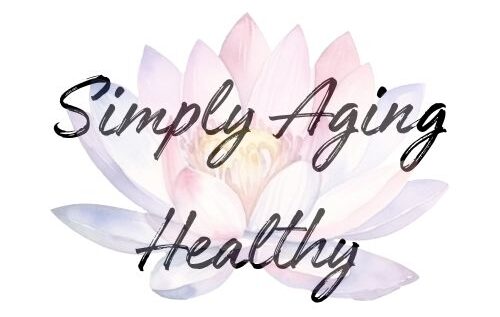9 of the Best Calisthenics Abs Exercises for Older Adults
Calisthenics is a type of exercise that uses a person’s own body weight for resistance.
No equipment is needed!
Including calisthenics abs exercises into your workout routine a few times a week can help to improve or maintain your core strength.
Why is this important?
Because our core muscles support good posture and decrease our risk of falls.
Which is huge as we age.
Calisthenic ab exercises can be adjusted to fit any fitness level, which helps to keep us safe from injury and gives us an effective workout.
But, the best part about calisthenic exercises for abs is the convenience; they can be done anywhere.
So, if you’re ready, let’s work on the best calisthenics exercises to strengthen those abs!
Calisthenics Abs Exercises
Below are some of my favorite calisthenics abs workout exercises.
They are better options for older adults with weaker core muscles.
Planks
The plank is a classic exercise that is effective for working the ab muscles.
They are also great because they are compound exercises, meaning they work more than one muscle group.
- Start by lying on your stomach.
- Push yourself up onto your forearms with legs straight.
- Focus on the proper form by keeping your elbows aligned under your shoulders and your body straight from head to heels.
- Be sure to engage your core muscles.
If you are new to planks, I suggest you start by holding the plank for 10-30 seconds and gradually increase the time as your strength improves.
Decline planks are a great option if you’re in better shape and are ready for more of a challenge.
Just place your feet up on a chair or bench and hold the plank position.
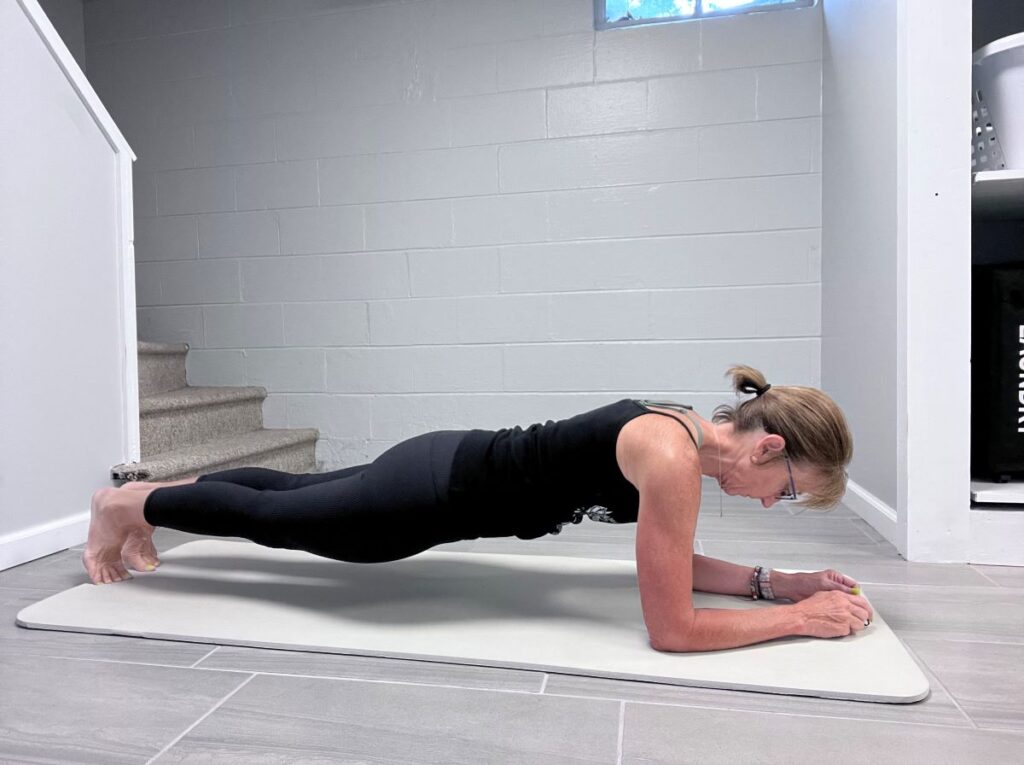
Bird Dogs
Bird dogs strengthen the entire core and improve balance.
- Start on all fours.
- Extend the left arm and right leg while engaging your core muscles.
- Keep your back flat and your hips level.
- Hold this extension for a few seconds before switching sides.
Typically, I aim for 8-12 repetitions on each side.
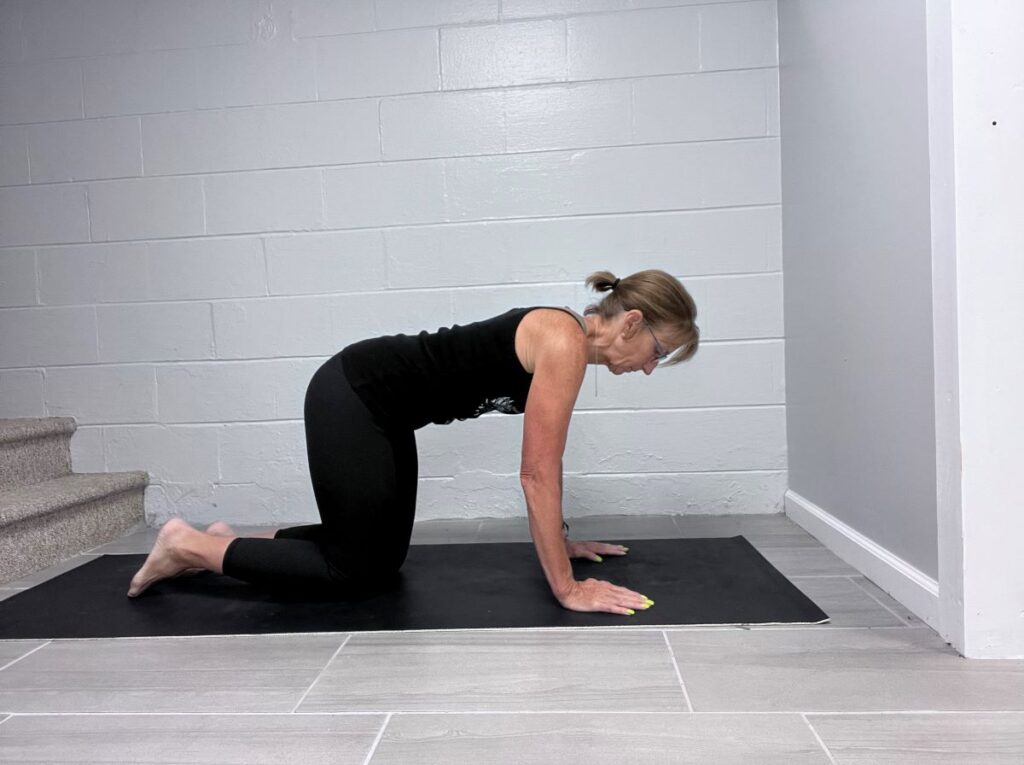
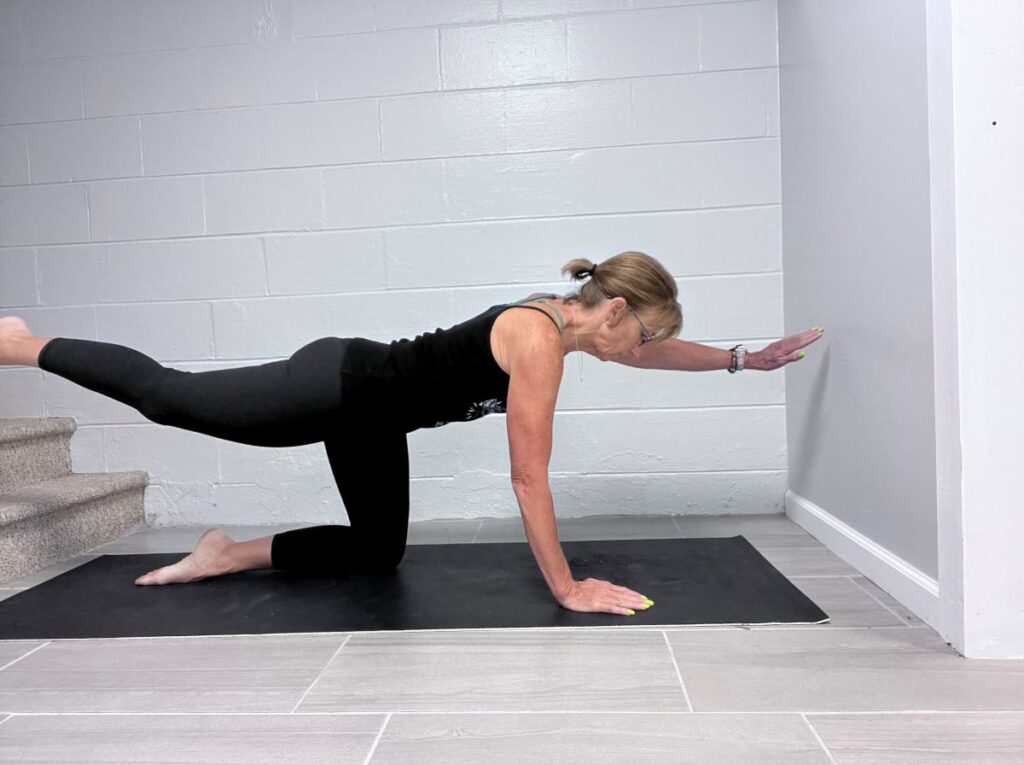
Leg Lifts
Leg lifts or leg raises are excellent for engaging the lower abs and the hip flexors.
- Begin lying flat on your back with your hands under your glutes or at your sides for support.
- Then, lift your legs straight up, keeping them together.
- Lower your legs back down without touching the floor.
- If this is difficult, start with bent knees or one leg at a time and work your way up.
Make sure that your lower back remains in contact with the floor.
Only lower your legs as far as you can without arching your back. If it begins to arch, don’t lower your legs any further.
It’s important to perform this movement with control to keep the core engaged.
Reverse Crunches
Reverse crunches are an effective way to work your major abdominal muscle groups, including the external obliques.
To do reverse crunches:
- Lie on your back and place your hands behind your head or flat on the floor for stability.
- Bring your knees toward my chest and lift your hips off the ground.
- Curl your lower body inward.
Start with a small hip lift and increase as you get stronger.
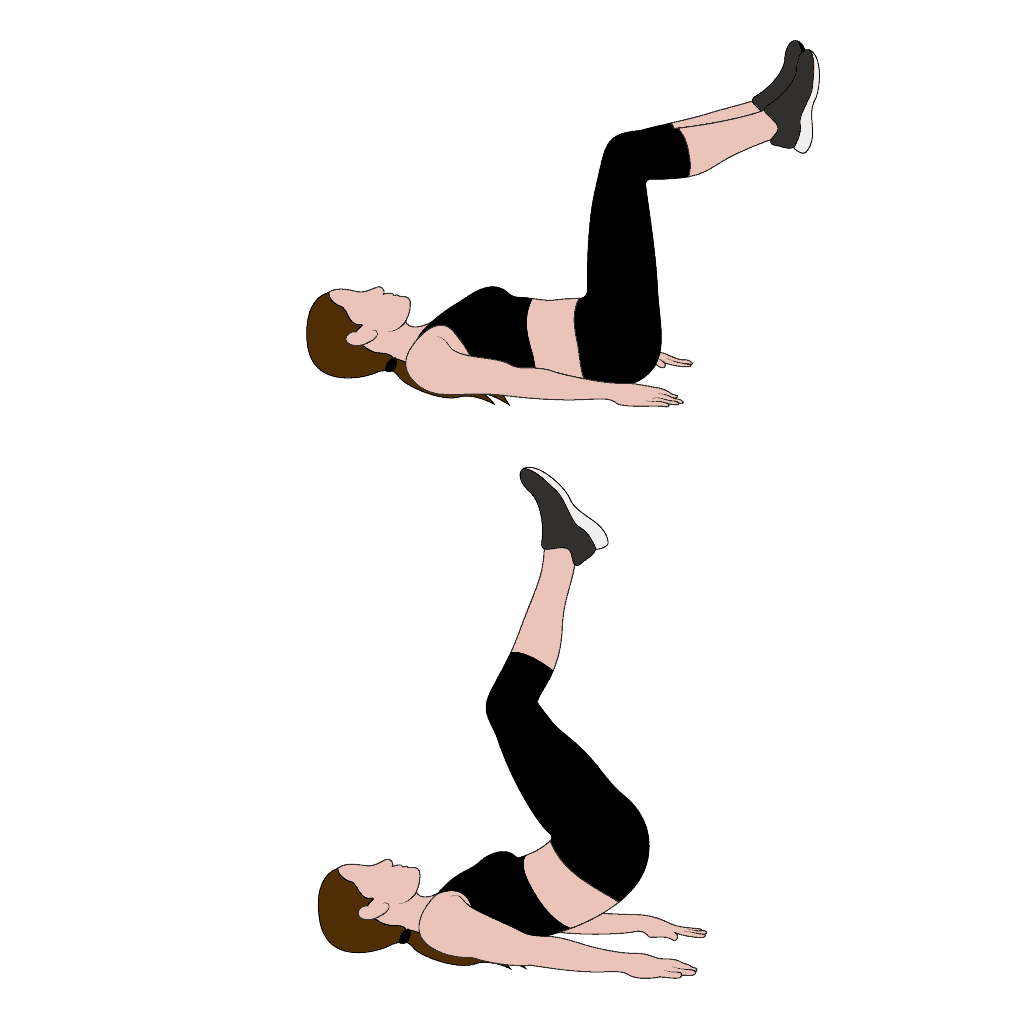
Supermans
This exercise helps to get your lower back muscles and the glutes stronger.
Yes, working the glutes and lower back is necessary to develop a strong core.
- Lying on your tummy with arms above your head.
- Raise both legs and both arms.
- Engage your buttocks.
- Hold this pose for 5-10 seconds.
- Then release and repeat 10-15 times.
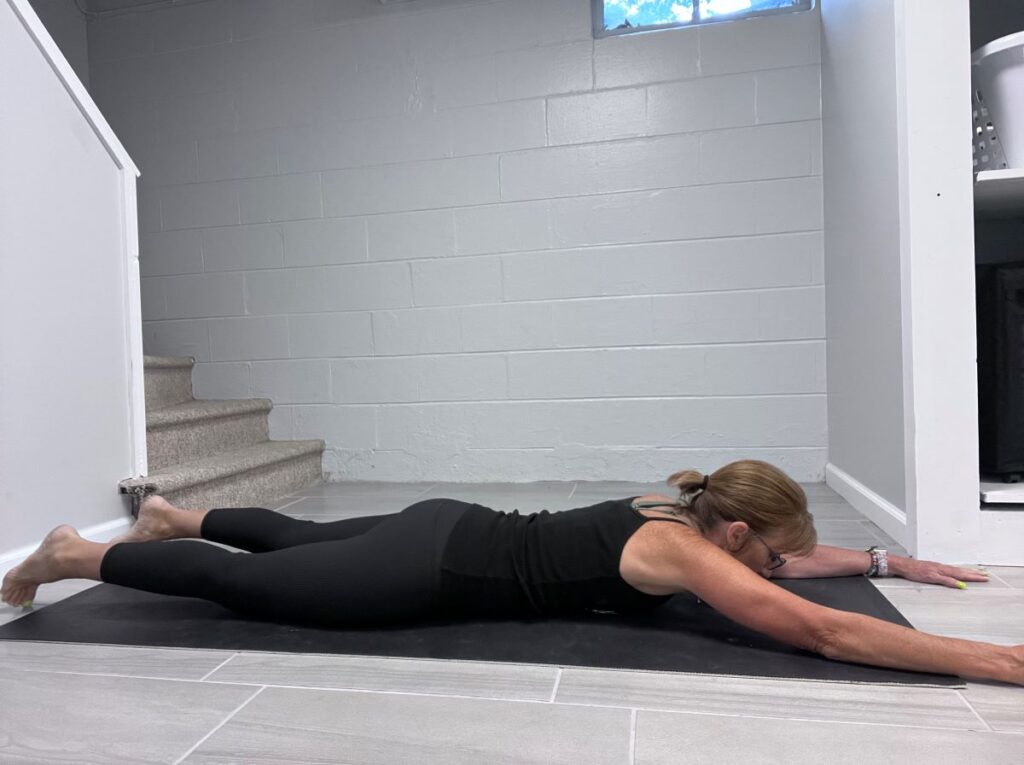
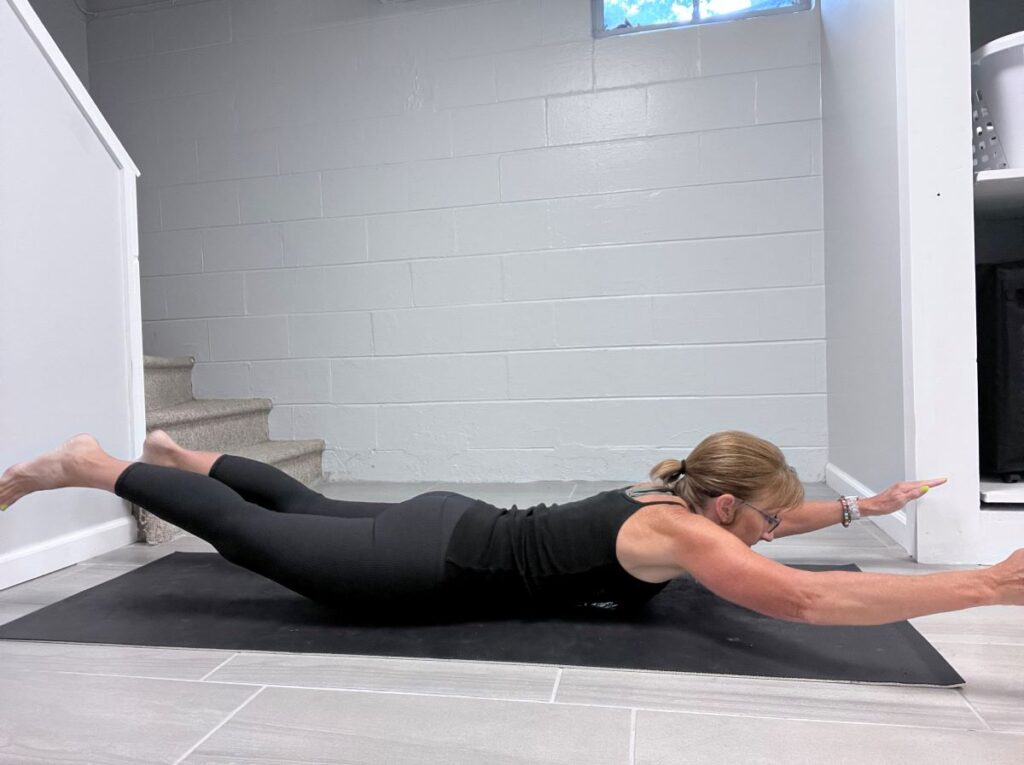
Oblique Ab Exercises
You also need to work on your obliques to help with core stability.
Here are the best exercises to help with this:
Side Plank
Side planks target the obliques and are a great way to help with lateral stability.
- Start in the plank position.
- Roll onto your right side.
- Stack your feet for balance and align your body in a straight line.
- Hold this position for 10-30 seconds.
- Then roll to the left side and repeat.
Work on increasing your hold time as you get stronger for better results.
Plank Knee to Elbow
Planks are great for abs, but by adding knee-to-elbow twists, you can also work the obliques.
- Start in a plank position.
- Engage your core by keeping your belly button in.
- Drive your right knee to your left elbow while keeping your abs engaged.
- Come back to plank.
- Drive your left knee to your right elbow.
- Repeat 5-10 times per leg and increase as tolerated.
Start slow, then increase speed as you build stamina and coordination.
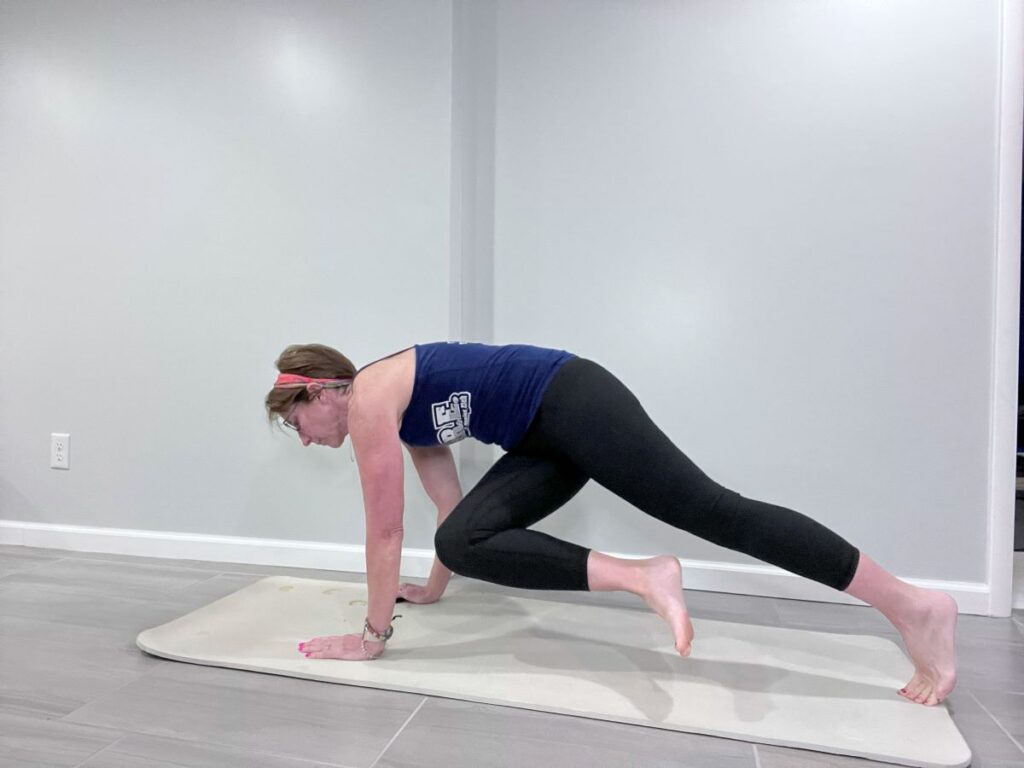
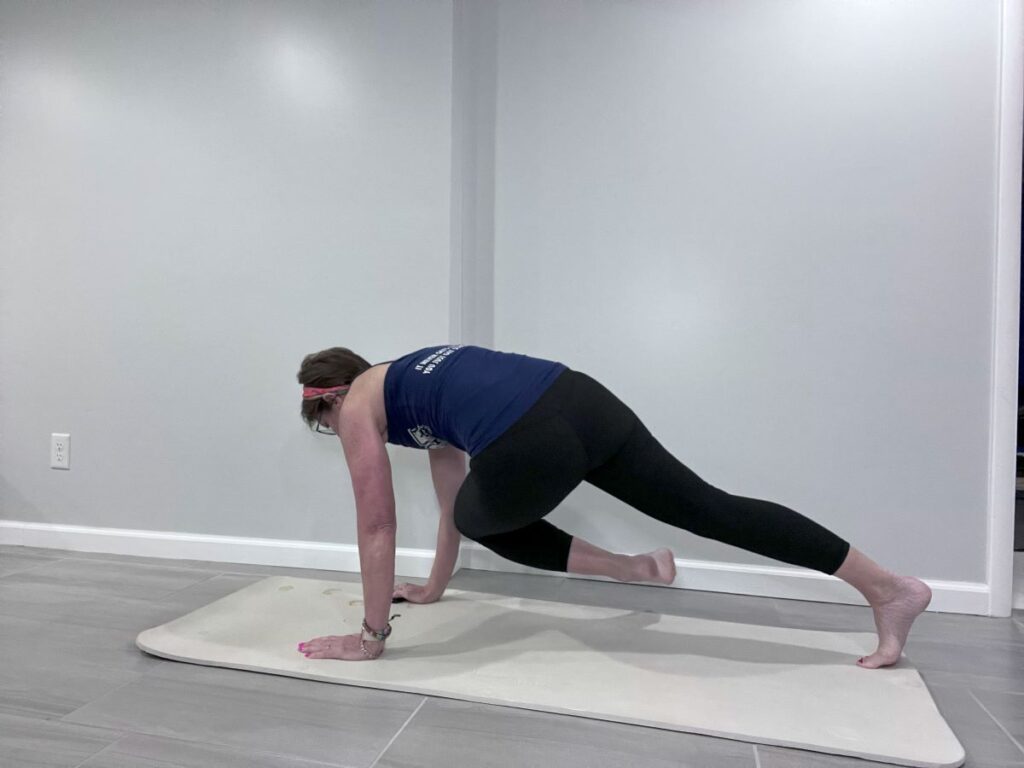
Russian Twists
Russian Twists are excellent for the external obliques and improving lumbar mobility.
- Sit on the floor with your legs bent.
- Lean your upper body back to about 90 degrees.
- Twist the right upper body to the leg knee.
- Then, go back to the starting position.
- Twist left upper body to right knee.
- Repeat 10 times per leg.
Keep your back straight and twist from the base of your spine.
For more of a challenge, lift your legs off the floor.
Bicycle Crunches
Bicycle Crunches are the best way to work your internal obliques.
- Start by lying on your back with your legs out on the ground.
- Lift your head and shoulders off the ground.
- Place hands behind your head.
- Bring the right knee towards your belly.
- At the same time bring your left elbow up to meet the right knee.
- Alternate on the other side.
- Repeat 10 times per side.

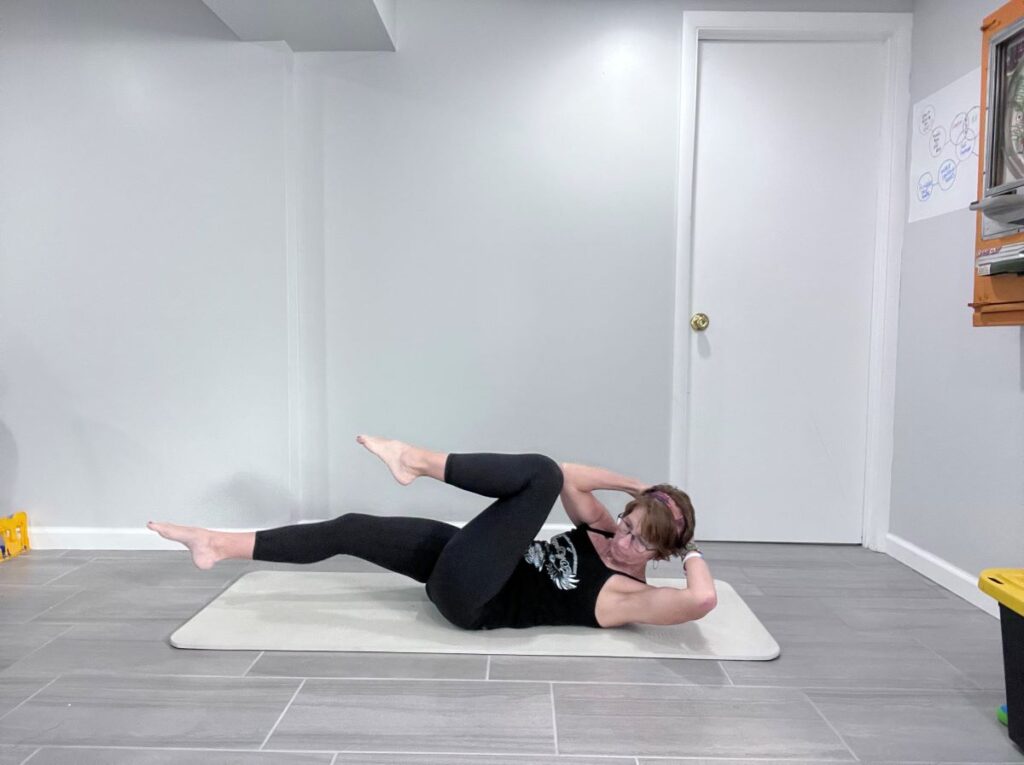
When you have mastered these exercises, you can move on to more challenging exercises such as ab wheel rollout, dragon flag, and hollow body hold.
Safety Tips and Injury Prevention
Safety is my top priority when I approach calisthenics exercises for abs, especially as an older adult.
To minimize the risk of injury, I follow these key precautions:
- Warm-Up Properly: Before you begin any workout, do a 5-10 minute warm-up. This can include light jogging, stretching, or mobility exercises to increase blood flow to the muscles.
- Use Correct Form: Be sure to perform each exercise with good form, focusing on controlled movements rather than speed. If you are unsure of the form, consult a trainer or watch instructional videos. It also helps to watch yourself in a mirror to make sure that you are doing the exercise correctly. ( I have mirrors all over my workout room so I can watch my form)
- Listen to Your Body: Always listen to what your body tells you. If you feel pain beyond normal exertion, stop immediately.
- Progress Gradually: Don’t rush to advance to more difficult exercises. Instead, gradually increase intensity and complexity to build strength over time.
- Stay Hydrated: Keeping hydrated is important for overall health, so drink water before, during, and after workouts.
- Rest and Recover: Do abs only two times per week to give your body time to recover. Take rest days and get plenty of sleep; this will help prevent overuse injuries.
Conclusion
Calisthenics exercises for the abs offer a versatile, effective, and accessible way to strengthen the core without the need for equipment.
These exercises not only improve muscular endurance and strength but also boost balance, stability, and overall body control.
It’s hard to believe that bodyweight exercises can be so powerful in core development.
You may not get six-pack abs, but by including a variety of movement patterns that target all areas of the abdominal muscles, you can create a fabulous workout that can benefit any fitness level.
Consistency, proper form, and progressive overload are key to improving abdominal definition and performance.
As with any exercise routine, it’s important to pair calisthenics with a healthy diet and adequate rest for the best results.
Always listen to your body and modify exercises to avoid injury and have a safe and effective workout experience.
Let me know what your favorite calisthenic exercises are and I also wouldn’t mind hearing your least favorite one!
